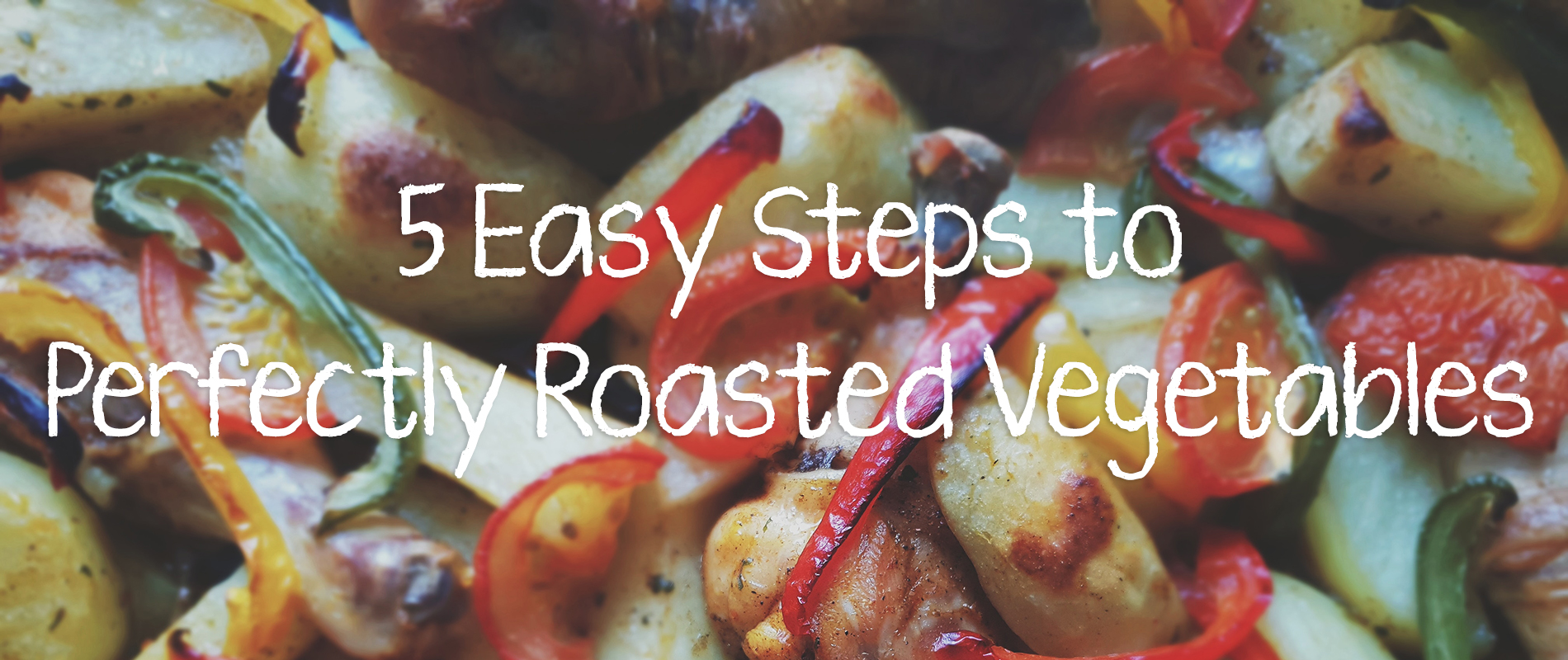Why are roasted vegetables so popular, especially in the cooler weather? Roasting vegetables caramelizes the natural sugars in the vegetables and makes them so darn tasty. When cooked properly, you get the perfect combination of a crispy exterior with a soft inside in every bite.
That aroma of roasting vegetables makes your house smell great as well. If your roasted vegetable experiments have been less than satisfying, don’t despair. Follow my simple 5 step approach — sometimes it’s the small details that make the biggest difference.
- Pick the right-sized pan
A sheet pan with sides is a go-to for roasting vegetables (and many other kitchen tasks). The lower edge allows the heat to flow around the vegetables and prevents them from sliding off the edges. You may need several sheet pans for roasting your vegetables as well. Please don’t overcrowd them onto one pan, one layer of vegetables and plenty of room will give you the best results. If you pile them up on the pan they will steam and not roast. Prep your pan for roasting by lining it with a parchment paper suitable for baking for easy cleanup. - Set oven to high enough temperature
Know your oven! Every oven has a slight variance in temperature and hot spots in the oven where the temperature is more intense. Invest in an oven thermometer so you know what temperature your oven is working at. A general guide is between 375 and 425. Hot is good! - Cut each vegetable into even size pieces
Whether you are roasting one type of vegetable or making a combination, it is important to cut each vegetable into even pieces. Have fun with different shapes but keep them similar in size so they will cook and crisp up evenly. If you are roasting a variety of vegetables, separate them into different sections on the prepared sheet pans instead of mixing them all together. Each vegetable has different cooking times, so If one vegetable is done before the others you can easily remove it from the pan. - Don’t be stingy with fat and don’t drown them
Before roasting your vegetables, you will need to toss them with some type of fat to help with browning and getting that crispy exterior. I prefer tossing them with the fat instead of drizzling it over the top. Tossing helps to coat each vegetable evenly resulting in a more consistent and delicious vegetable. You don’t want to be stingy with the oil and you don’t want it to be dripping in fat either. I suggest about 1 tsp of fat for 1-2 cups of vegetables as a starting point. What type of oil is best? Choose an oil with a high smoke point, one that will hold up to high temperature, not damage the oil and not become bitter or give your vegetables a burnt flavor. My top choices are; coconut oil, olive oil (not extra virgin), ghee and avocado oil. - Season, season, season
Don’t forget to season. Salt and pepper are a great start and sometimes all you need. Want a little more flavor and spunk? Add in spices and herbs, cayenne pepper, cumin, five-spice powder, cinnamon, nutmeg, curry, and turmeric are some of my favorites. Garlic, fresh, granulated…don’t forget the garlic. Add in fresh chopped herbs after the vegetables are roasted, tossing them right before serving for a pop of bright flavor. Season up your oil with some mustard, maple syrup and spices to toss with your vegetables.
Need more recipe ideas? Here are a few from my archives to get you started:

